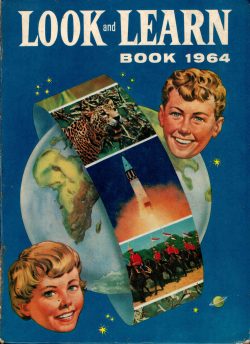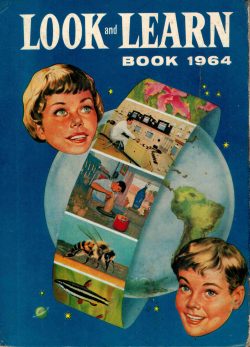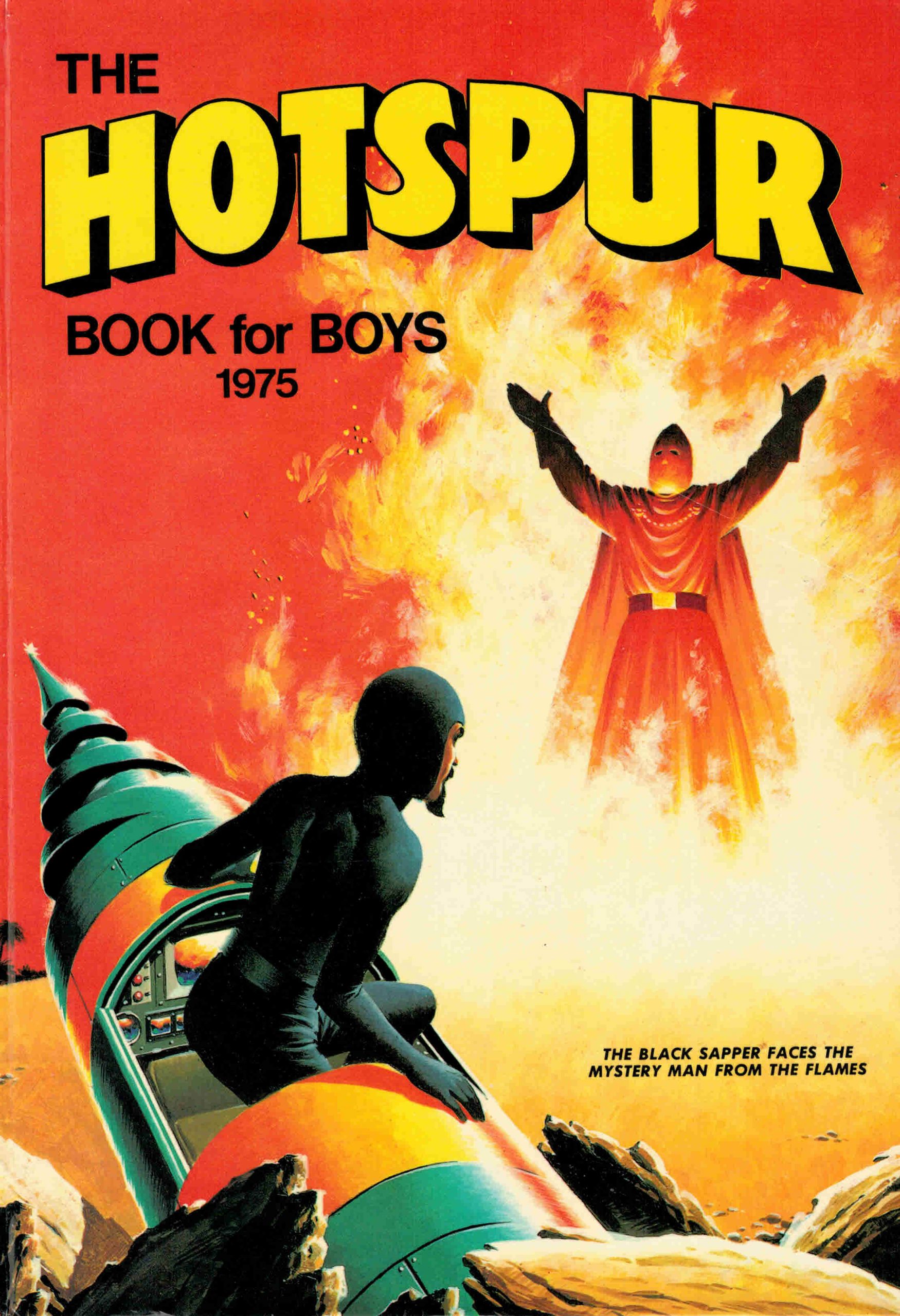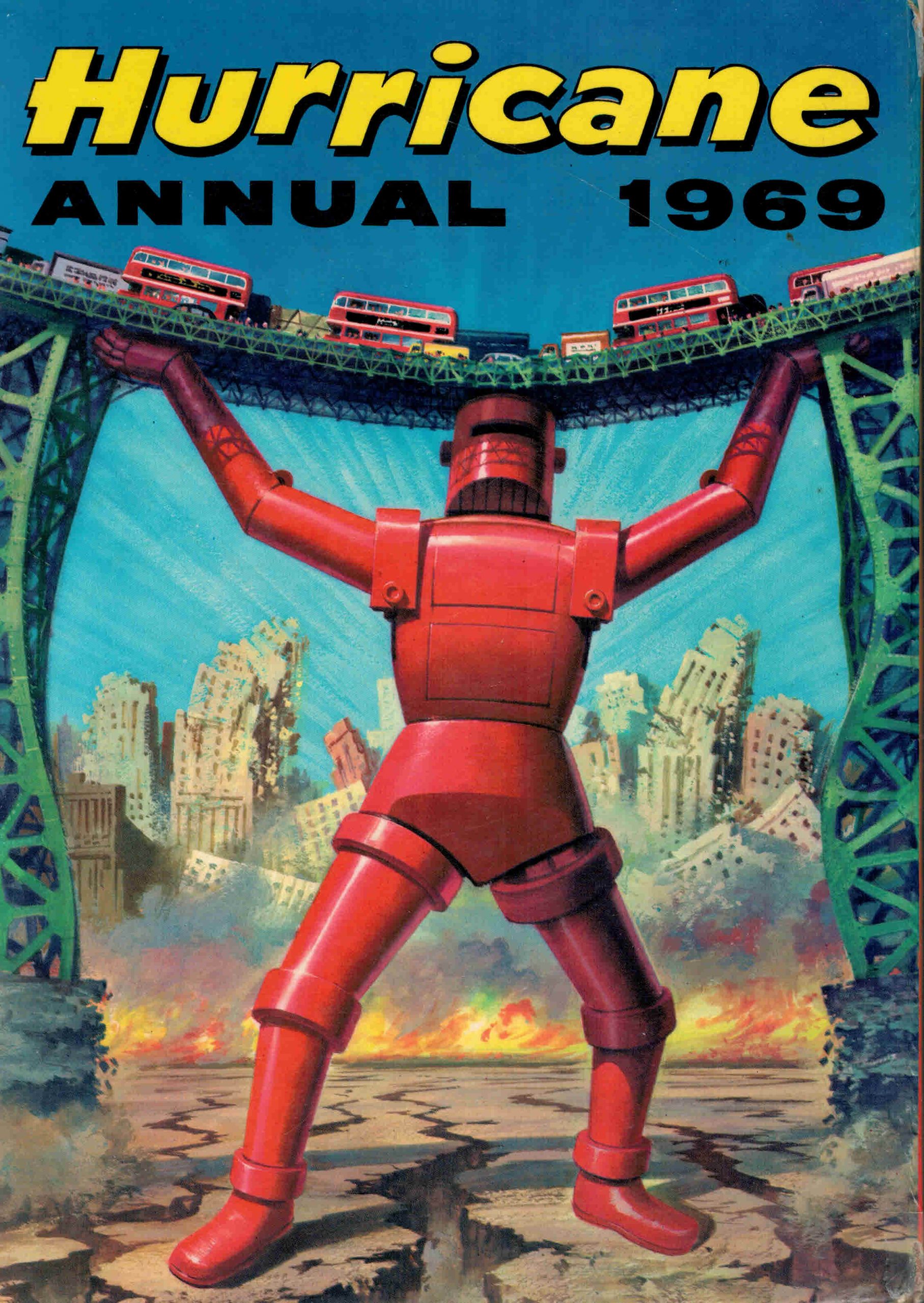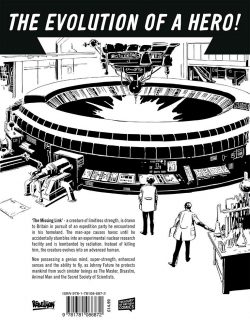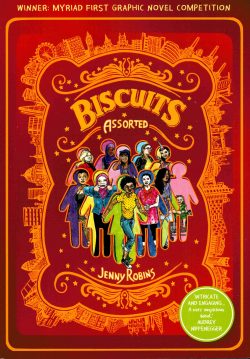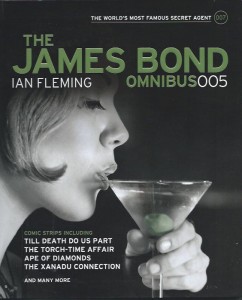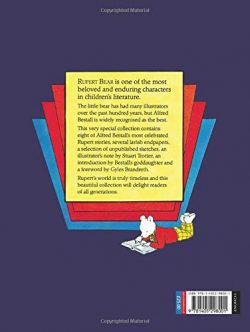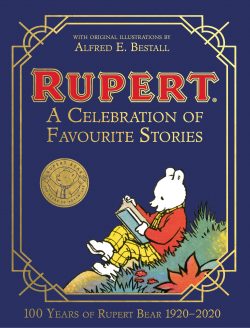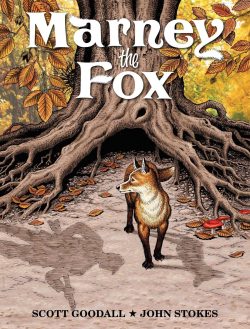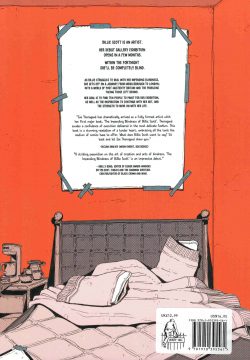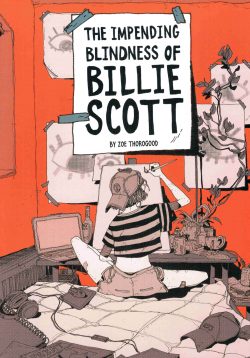

By Jaimie Smart, with Laura Bentley & Sammy Borras (David Fickling Books)
ISBN: 978-1-78845-195-6 (PB)
Way back in 2012, Oxford-based family publisher David Fickling Books launched a weekly comics anthology for girls and boys which harked back to the grand old days of British picture-story entertainment intent whilst embracing the full force of modernity in style and content.
Each issue offers humour, adventure, quizzes, puzzles and educational material: a joyous parade of cartoon fun and fantasy. Since its premiere, The Phoenix has gone from strength to strength, packed with splendid tales from amazing creators. This is a handily repackaged instant classic from one of the best…
Concocted with gleefully gentle mania by cartoonist, comics artist and novelist Jamie Smart (Fish Head Steve!; Looshkin; Flember), Bunny vs. Monkey has been a fixture from the very first issue: a madcap duel of animal arch rivals set amidst the idyllic arcadia of a more-or-less ordinary English Wood. Those trend-setting, mind-bending antics were rapidly retooled as graphic albums and are now available in remastered, double-length digest editions. In case you’re wondering, the fabulous fun found here originally inhabited volumes 3 & 4, then entitled The Stench and The Wobbles…
The tittering, tail-biting tension details the ongoing war of wits and wonder-weapons over another year in the country. The obnoxious simian co-star originally arrived after a disastrous space shot went awry. Having crash-landed in Crinkle Woods – a scant few miles from his blast-off site – Monkey believes himself rightful owner of a strange new world, despite the continual efforts of reasonable, sensible, contemplative Bunny. Despite patience, propriety and good breeding, the laid-back lepine is increasingly compelled to wearily admit that the incorrigible idiot ape is a rude, noise-loving, chaos-creating troublemaker…
Following a vivid gallery of stars, the month-by-month mayhem reports recommence with January as chilly snow blankets the ground. ‘Log Off!’ finds Bunny in need of firewood, but he should never have asked happily brain-battered, bewildered former stuntman Action Beaver to help gather it…
Blithering innocents Weenie Squirrel and Pig then take centre stage as the baking-addicted tree-rodent reveals he has an imaginary friend. The mocking fools have no idea ‘Lionel!’ is actually one of the ghastly Hyoomanz intent on demolishing the Wood to build something called a motorway…
Monkey’s greatest ally is ostracised outcast and hairy mad scientist Skunky – a brilliant inventor with a bombastic line in animal-themed atrocity weapons and a secret agenda of his own. His latest bovine-inspired stealth weapon – ‘Ca-Moo-Flarj!’ – promptly goes the way of most of his ghastly gimmicks, after which both furry factions catch gold fever in ‘The Quest for Blackbeard’s Treasure!’ Sadly, the old map stuffed in a tree trunk is of very recent vintage…
February opens with ‘T3-ddy!’ as Skunky’s colossally devastating robo-bear is suborned and defeated by its own innate need for a cuddle, after which Bunny discovers a vast cavern under his food store. At first, he thinks it’s just Skunky’s latest indiscretion, but even the evil mega-genius is surprised at the hideous thing ‘What Lies Beneath!’…
‘Casa Del Pig!’ sees woodland folk unite to make the porcine ingénue a home of his own, after which ‘Meet Randolph!’sees them all together to greet a visiting raccoon. The masked stranger claims to be the cousin of surly radical environmentalist (and keeper of ancient secrets) Fantastique Le Fox, and he can certainly handle himself in a crisis, as evidenced by the swift and efficient way he despatches Monkey and Skunky’s rampaging mechanical Helliphant…
March ushers in a not-so fragrant Spring as Skunky decides to weaponize his own natural defences, but ‘The Stench!’proves yet again that his intellect far outstrips common sense and any iota of self-restraint…
When an irrepressible yet lonely cyber-crocodile finds a message in a bottle, he unbends enough to ask Bunny for reading and writing lessons in ‘The Educating of Mister Metal Steve!’ Sadly, his eventual RSVP proves that core-programming is hard to escape…
A rare victory for Evil is revealed through the creation of a giant beached flounder in ‘Fishy Plops!’ before nature reasserts itself in ‘Bad Crowd!’, wherein the tantrum-throwing Monkey meets some heretofore unknown woods-dwellers who terrify even him…
The Skunk boffin finally goes too far in his quest for knowledge and accidentally invents Boomantium, capable of creating ‘The Biggest, Mostest Enormousest Explosion in the World!’ Nobody expected dim-witted Action to find a solution to the imminent cacophonous catastrophe, but as April opens ‘Billion Dollar Beaver!’ reveals that their crash-helmeted comrade is indestructible. He should therefore be considered another actual ultimate weapon… unless, of course, you’re just a short-sighted, imagination-limited primate with delusions of grandeur…
Over the months the Woods have become home to an increasingly impressive variety of non-native species and an unsavoury crisis of explosive proportions is barely averted when ‘The Kakapo Poo Kaboom!’ defeats the ever-encroaching “Humans†but not the combined efforts of Bunny and Skunky.
His evil dominance drastically declining, the appalling anthropoid is blackmailed by Pig and Weenie into being their ‘Monkey Butler!’, before May blossoms and ‘The Big Eye Am!’ sees a gigantic laser-firing orb crashing through the verdure, closely followed by its previous owner…
‘On the Road!’ finds the beastly boys trying to decide on how to stop the motorway builders when the meeting is disrupted by cute running-toy addict Hamster 3000. This allows Skunky and Le Fox to resume their own private negotiations, after which Monkey returns to his devious top form when subjecting the flora and fauna to the inundation of ‘The Purple!’
May becomes June during ‘The Weird, Weird Woods! (Part One and Two)’ as the animals invade the humans’ building-site shed. They are furiously repelled and pursued by the bizarre and terrified creatures within, but their first foray is soon forgotten when Bunny wakes up in proposed paradise ‘Bunnyopia!’, only to discover it is a monstrous and frightening sham…
Skunky’s perpetual and wanton splashing about in the gene-pool then results in terrifying travesty ‘Octo-Fox!’ and only Monkey’s arrant disregard for all rules and laws – including Nature’s – saves the day: one-upping the tentacled terror, after which ‘Weenie’s Big Adventure!’ gives the benign waif a day to remember after waking an oversleeping bear. A little later, however, a mind-swapping device in the wrong paws leads to a plague of chaotic ‘Brainache!’
With a seemingly quiet moment to spare, the animals consider the past and their futures in ‘Woodland Story!’, leading to Skunky’s new Clone-a-Tron generating ‘So Many Monkeys!’ that the dream of Monkeytopia seems a forgone conclusion…
Focus switches now on the pasts of our uncanny assortment of odd critters littering and loitering around the bucolic paradise as the Hyoomanz are now well underway in building that motorway through the sylvan glades and apparently unprotected parks…
Sadly, all the tail-biting tension does nothing to derail the ongoing but so-far-localised war of wits and wonder-weapons, and the already fraught atmosphere gets another unnecessary shot of adrenaline as ‘A New Challenger Appears’ in the fuzzy form of The Maniacal Badger, resolutely challenging Skunky for the title of top mad scientist, after which Monkey wrecks a playground but loses face once Bunny gets him to share a ‘See-Saw!’…
Skunky horrifies blithering innocents Weenie and Pig when his ‘Grav-O-Box’ sets the river running backwards, although when co-conspirator Monkey ruins the test flight of his Hot Air Balloon Jet Engines and propels them ‘Around the Woods in 80 Seconds’ the malcontents themselves are the only ones to suffer…
Sinking into over-indulgence, the simian stinker has to take drastic action after becoming a ‘Fat Monkey’ before stealing some building machinery from the Hyoomanz in ‘Monkey at Work’…
Skunky upsets the balance of nature – and value of custard – after creating aberrant lifeform ‘The Wobbles!’, after which every animal pulls together when a Hyooman wanders in and Bunny orders ‘Battle Stations’. Of course, Skunky stupidly makes things so much worse by splicing Science to Nature and releasing ‘The Vines’…
An annoying game of ‘Poink!’ drives everybody bonkers but welcome terror returns after the colossal ‘Monkeytron!’rampages through the trees, in time to greet rocket scientists searching for a test monkey they lost in the very first episode…
Pig’s origin is revealed in the cleverly obfuscatory (not!) ‘A Pig on the Range’ before Park Ranger Derek P. Brigstockehas a close encounter with a net and ‘A Bear Bum!’, whilst irrepressible yet lonely cyber-crocodile ‘The Incredible Metal Steve’ undergoes a ferocious metal-morphosis even as ‘Bunny Vs. Monkey!’ finds our notional stars getting back to bruising basics in their never-ending struggle…
After a troop of Hyooman cub scouts fail to ‘Catch That Bunny’, Pig and Squirrel dig up ‘Worms’ and take the slimy earth-movers fishing, but not in any way you’ve seen before… ‘Goodbye, Bunny’ then finds our pacifist protagonist plunging deep into the distant city in search of his origins, and Pig becomes a dragon-slaying knight in ‘Arise, Lord Wuffywuff!’
…And none too soon as it happens, since, with snow falling, the Maniacal Badger returns to worry the woodland folk with ‘The Thing!’ he’d stolen from the Hyoomanz Building Site, prompting a desperate search for natural leader Bunny: a trail taking them to a comfortable suburban hutch and ‘A Place Where You Belong’…
Reunited with the Crinkle Woods critters, Bunny finds a time machine and – by accidentally visiting ‘Once Upon a Time’– discovers the true secret of Skunky’s vast and evil intellect, courtesy of an extra-long extravaganza which segues straight into the formation of sadly deficient superhero team The Rather Good Squad in ‘Choose Your Side!’
With Christmas fast approaching, festivities are briefly disrupted by marauding ‘Snow Meanies’ before the Builders try secretly bulldozing the Woods. They are stopped by Monkey, gleefully brain-battered, bewildered former stuntman Action Beaver and ‘The Real Santa!’…
The madcap mayhem concludes with a portentous epilogue as ‘Door B’ opens to reveal the ultimate triumph of the ultimate villainous mastermind, but that’s…
To Be Continued…
Adding lustre and fun, this superb treat includes detailed instructions on ‘How to Draw Pig’ and ‘How to Draw Skunky’, so, as well as beguiling your littl’uns with stories, you can use this book to teach them a trade…
The absolute acme of absurdist adventure, Bunny Vs Monkey is halfway to becoming a British Institution of weird wit, brilliant invention and superb cartooning: an utterly irresistible joy for grown-ups of every vintage, even those who claim they only get it for their kids. Endlessly inventive, sublimely funny and outrageously addictive, this is the kind of comic parents beg kids to read to them. Why isn’t that you, yet?
Text and illustrations © Jamie Smart 2021. All rights reserved.
Bunny vs. Monkey and the Human Invasion! will be published on February 4th 2021, and is available for pre-order now.


